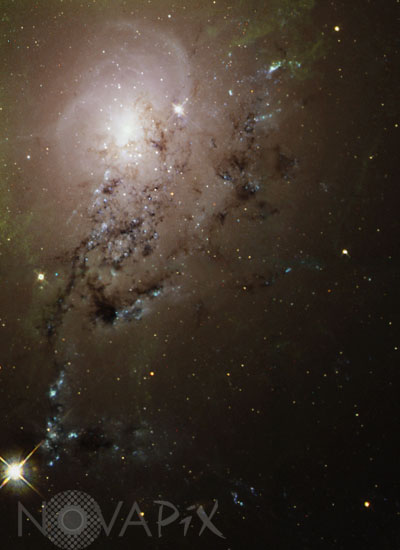Photo Agency - Astronomy - Space - Nature

Elliptical galaxy NGC 1275 in Perseus
author: NASA/Hubble Heritage Team/Novapix
reference: a-gax12-75001
Image Size 300 DPI: 12 * 17 cm
These images, taken with Hubble's Wide Field Planetary Camera 2 (WFPC2), show traces of spiral structure accompanied by dramatic dust lanes and bright blue regions that mark areas of active star formation. Detailed observations of NGC 1275 indicate that the dusty material belongs to a spiral system seen nearly edge-on in the foreground. The second galaxy, lying beyond the first, is actually a giant elliptical with peculiar faint spiral structure in its nucleus. These galaxies are believed to be colliding at over 6 million miles per hour. NGC 1275 is about 230 million light-years away in the constellation Perseus. Embedded in the center of a large cluster of galaxies known as the Perseus Cluster, it is also known to emit a powerful signal at both X-ray and radio frequencies. The galaxy collision causes the gas and dust already existing in the central bright galaxy to swirl into the center of the object. The X-ray and radio emission indicates the probable existence of a black hole at the bright galaxy's center. While the dark dusty material in the Hubble image falls inward, NGC 1275 displays intricate filamentary structures at a much larger scale outside the image. This is a typical feature of bright cluster galaxies.
Contact : Stéphane Aubin +33-(0)9-51-26-53-76
© Novapix - All rights reserved


